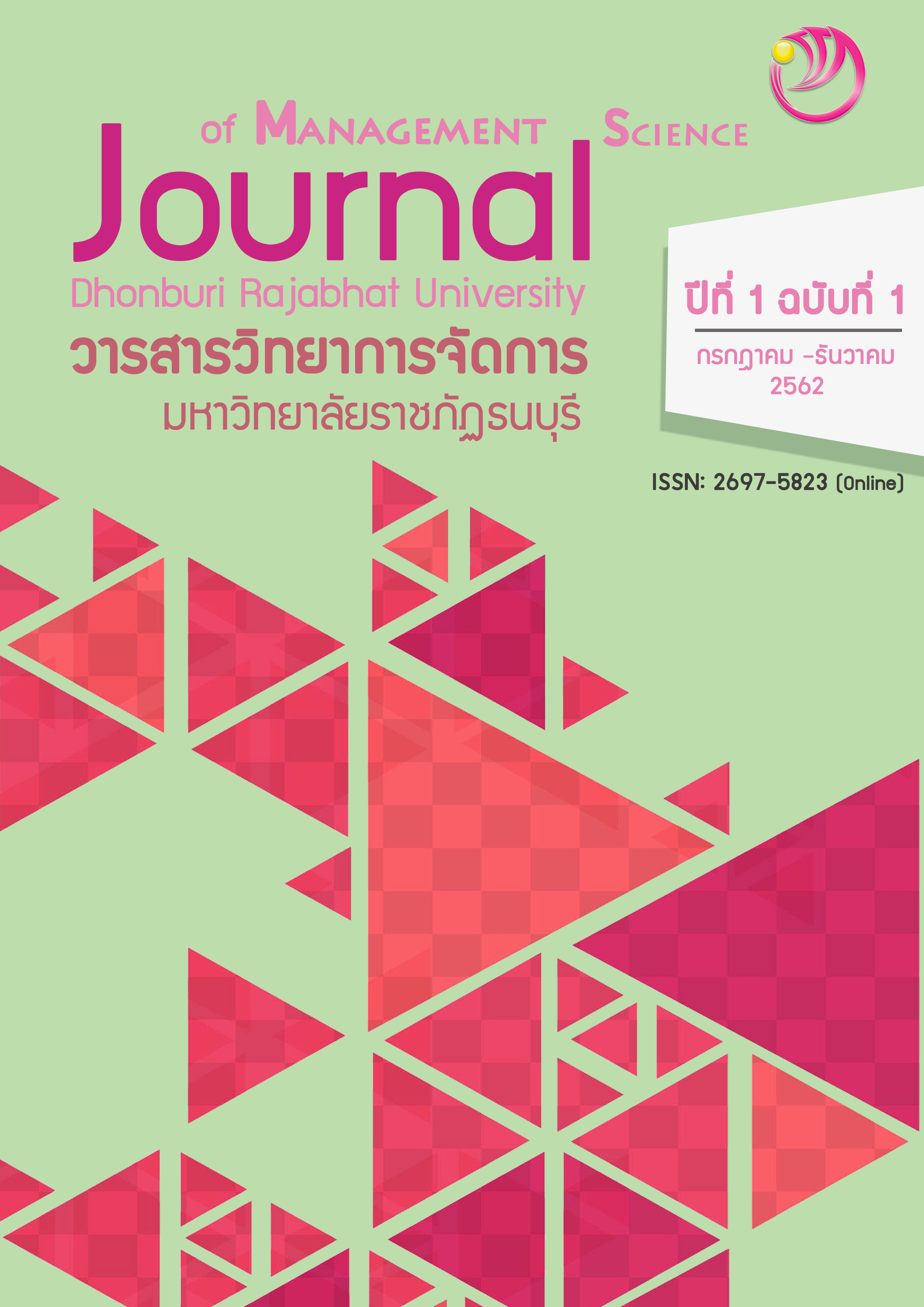กระบวนการจัดการข่าวสารที่เป็นเท็จ (FAKE NEWS)
คำสำคัญ:
การป้องกันข้อมูลข่าวสารที่เป็นเท็จ, แนวทางการพัฒนา, กระบวนการจัดการบทคัดย่อ
การศึกษาครั้งนี้ มีวัตถุประสงค์เพื่อการป้องกันข้อมูลข่าวสารที่เป็นเท็จ และเพื่อเป็นแนวทางการพัฒนากระบวนการจัดการข้อมูลข่าวสารที่เป็นเท็จ
ผลการศึกษา พบว่า รูปแบบข้อมูลข่าวสารที่เป็นเท็จมีดังต่อไปนี้ ข้อมูลข่าวสารที่เป็นเท็จแบบการเสียดสีและการล้อเลียนข้อมูลข่าวสารที่เป็นเท็จแบบที่ทำให้เข้าใจผิดข้อมูลข่าวสารที่เป็นเท็จแบบหัวข้อข่าวที่ทำให้เข้าใจผิดข้อมูลข่าวสารที่เป็นเท็จแบบอ้างอิงแหล่งที่มาที่เป็นเท็จ ข้อมูลข่าวสารที่เป็นเท็จแบบใช้ภาพที่ไม่เกี่ยวข้องกับเนื้อหา ข้อมูลข่าวสารที่เป็นเท็จแบบมีการให้ข้อมูลที่ผิดพลาด และสุดท้าย คือ ข้อมูลข่าวสารที่เป็นเท็จแบบเนื้อหาที่จงใจสร้างข้อมูลข่าวสารที่เป็นเท็จทั้งหมดการตรวจสอบข้อมูลข่าวสารที่เป็นเท็จสามารถทำได้ด้วยการตรวจสอบความผิดปกติของข้อมูลหรือรูปแบบของข้อมูลที่ผิดและการตรวจสอบข้อเท็จจริงจากการประเมินแหล่งที่มาและเนื้อหาภาพ แนวทางการพัฒนากระบวนการจัดการข้อมูลข่าวสารที่เป็นเท็จมีขั้นตอนคือการตรวจสอบผู้เผยแพร่จากต้นทางการตรวจสอบแหล่งข้อมูลที่อ้างถึงในบทความการตรวจสอบเวลาในการเผยแพร่การตรวจสอบที่อยู่ของเว็บไซด์และการตรวจสอบข้อเท็จจริงบนสื่อสังคมออนไลน์เป็นกระบวนการที่สื่อมวลชนและประชาชนนำมาใช้เพื่อเป็นการตรวจสอบข้อมูลข่าวสารก่อนที่จะนำเสนอไปสู่สาธารณะ
เอกสารอ้างอิง
Bertin Martens, Luis Aguiar, Estrella Gomez-Herrera and Frank Mueller-Langer. (2018). The digital transformation of news media and the rise of disinformation and Fake news. European Commission, Joint Research Centre.
Carol Soon and Shawn Goh. (2018). FAKE NEWS, False information and more: Countering Human Biases.Institute of Policy Studies,NationalUniversity of Singapore.
Cherilyn Ireton and Julie Posetti. (2018). .Journalism,‘Fake news’ & Disinformation.Handbook for Journalism Education and Training,the United Nations Educational, Scientific and Cultural Organization.
Elkjaer, Bente. (2003).Social Learning Theory: Learning as Participation in Social Processes. Handbook of Organizational Learning and Knowledge Management, Mark Easterby-Smith and Majorie A. Lyles (Eds.), Oxford: Blackwell Publishing Ltd.
Gelfert, Axel. (2018).Fake news: a definition. Informal Logic, Vol. 38, No.1 (2018), pp. 84–117.
Lazer, D, M Baum, Y Benkler, A Berinsky, K Greenhill, F Menczer, M Metzger, B Nyhan, G Pennycook, D Rothschild, M Schudson, S Sloman, C Sunstein, E Thorson, D Watts, J Zittrain. (2018).The science of Fake news.Social Science policy forum, Sciencemag.org, 9 March 2018, VOL 359 ISSUE 6380.
Rasmus K. Nielsen and Lucas Graves.(2017). News you don’t believe Audience perspectives on Fake news. Reuters Institute.
Stanley J Baran, and Dennis K Davis. (2012). Mass Communication Theory. (6th edition) Canada: Wadsworth Cengage Learning.
Santanu Chakrabarti, Claire Rooney and Minnie Kweon. (2018).Duty, Identity, Credibility: Fake news and the ordinary citizen in Kenya and Nigeria – a comparative study.BBC research.
Santanu Chakrabarti, Lucile Stengel and Sapna Solanki. (2018). Duty, Identity, Credibility: ‘Fake news’ and the ordinary citizen in India.BBC research.
Tufte, T. and Mefaloputlos, P. (2009). Participatory communication: A practical guide. Washington D.C.: The World Bank.
Thomas, Pradip. (2004). Participatory communication for social change. California: Sage Publication.
Wardle, C. and H. Derekshan. (2017). Information Disorder: Toward an interdisciplinary framework for research and policy making.Council of Europe report, Strasbourg, France.
Zeenab Aneez, Taberez Ahmed Neyazi, Antonis Kalogeropoulos, and Rasmus Kleis Nielsen. (2019). India Digital News Report. Reuters Institute.
ดาวน์โหลด
เผยแพร่แล้ว
รูปแบบการอ้างอิง
ฉบับ
ประเภทบทความ
สัญญาอนุญาต

อนุญาตภายใต้เงื่อนไข Creative Commons Attribution-NonCommercial-NoDerivatives 4.0 International License.







